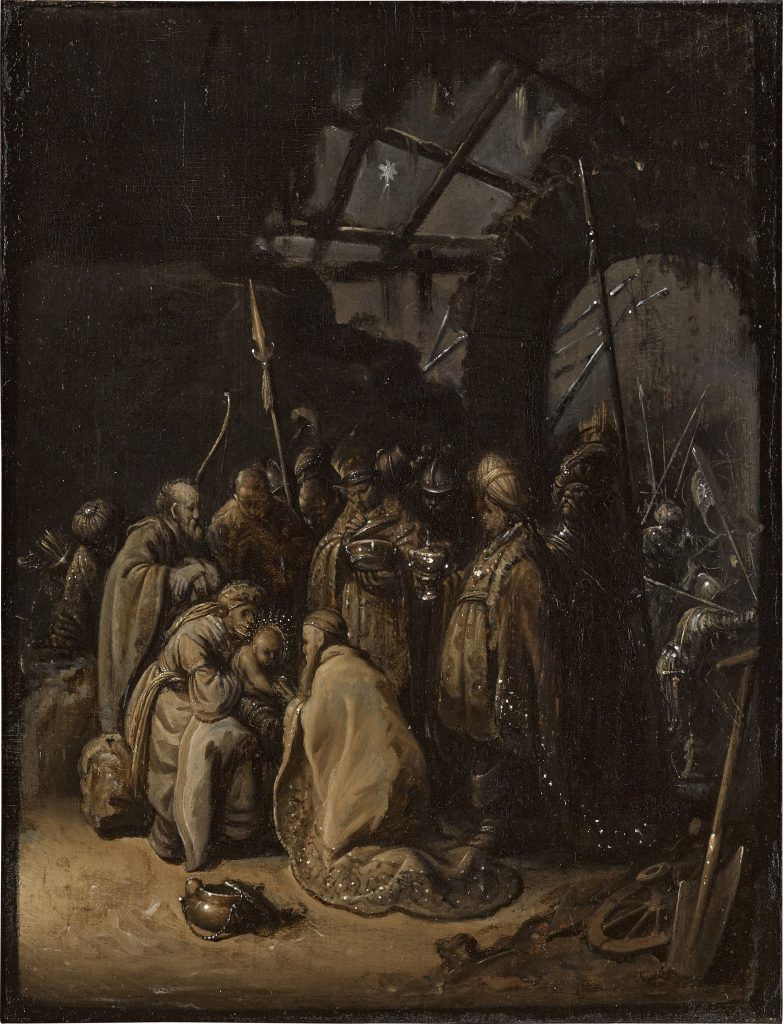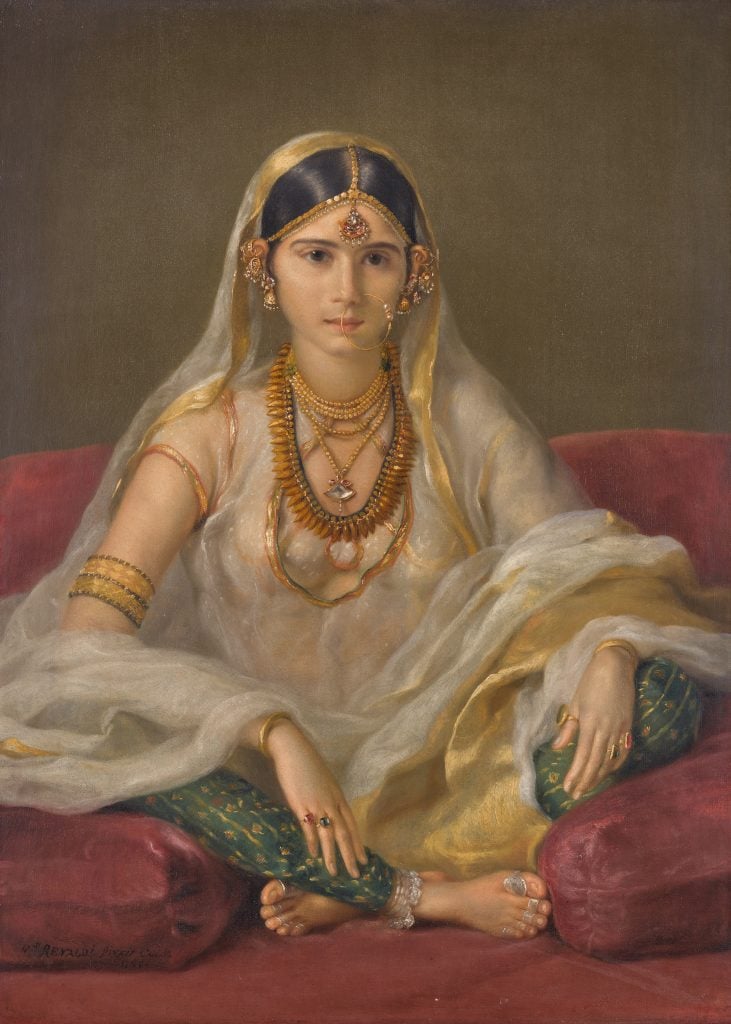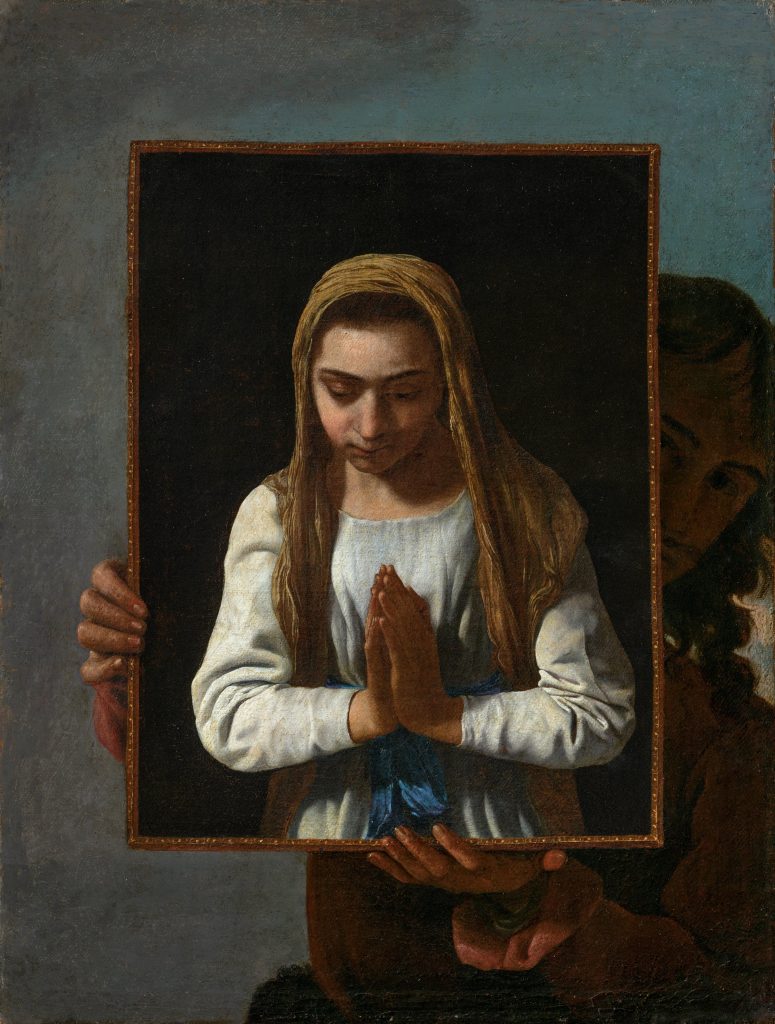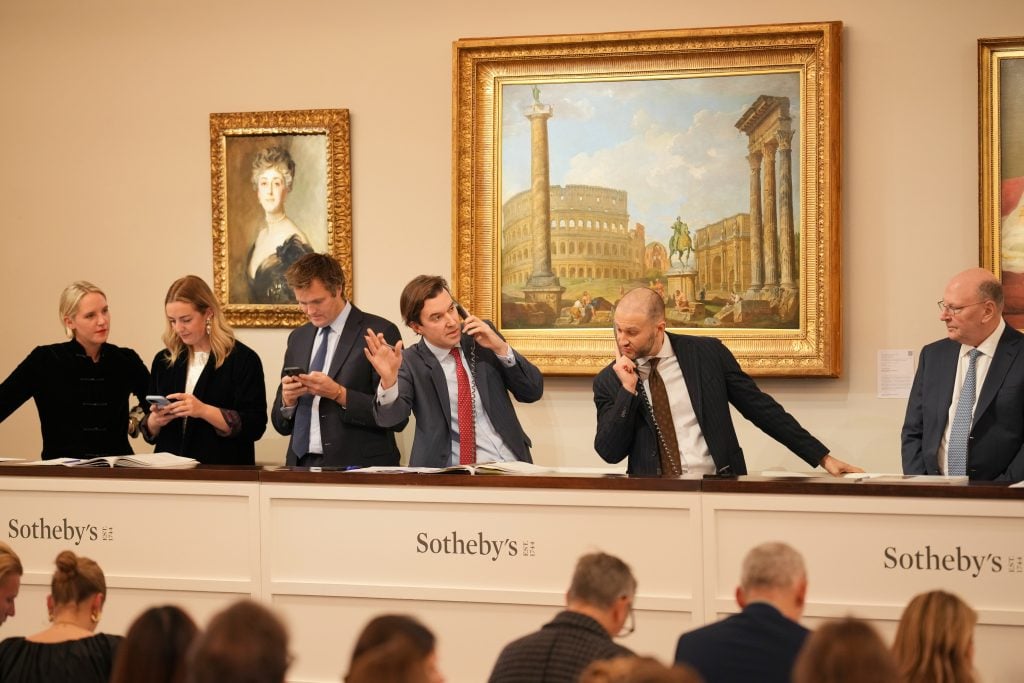Against the backdrop of London Art Week, a dealer-led initiative promoting historical art in the U.K. capital, the city’s auction houses were hoping to make a combined £60 million ($75.3 million) in sales during their winter Old Master events. They largely succeeded.
Sotheby’s coined the umbrella term Masters Week for their auctions, which included Old Master and 19th-century paintings, ancient sculpture, and decorative arts, along with historic British pictures, and 19th-century British and European painting and works on paper. All of these categories were once the subject of separate specialist sales, but no longer.
Christie’s has used the term Classic Week for the past few years to give its Old Master category broader appeal. This year’s events included single owner sales from the Christian Levett collection of antiquities and contemporary art, and a large chunk of the unrivaled Samuel Josefowitz collection of Rembrandt prints.
The spoils for the week were divided roughly equally, with Christie’s coming away slightly ahead with more lots sold by Friday, bringing in a total of £34.2 million ($42.9 million) against Sotheby’s £29.2 million ($36.6 million). (Prices in this report include the buyer’s premium, estimates do not.)
Sotheby’s
Sotheby’s first sale on December 6 was estimated to make £16.4 million–£24.4 million ($20.6 million–$30.6 million), which is about the average for a market that can have an unpredictable supply. The auction house realized a combined £19.4 million ($24.3 million) for its 27 lots offered, seven of which went unsold. This was their second highest total for a winter season Old Master sale in London in five years.
The sale opened strong, with a 16th-century altarpiece by Ambrosius Francken the Elder, which doubled its estimate to sell for £152,400 ($191,200).

Rembrandt Harmensz van Rijn, The Adoration of the Kings, sold for £11 million ($13.8 million), against an estimate £10 million–£15 million. Photo: courtesy of Sotheby’s.
The star lot was a small dark panel, The Adoration of the Magi, recently confirmed to be a work by Rembrandt after decades of doubt. In October 2021, the painting was offered by Christie’s in Amsterdam as a work by the “Circle of Rembrandt,” with an estimate of €9,000–€10,000, but some in the market believed it may have been entirely by the Old Master’s hand, and it sold for €860,000 ($992,727). The buyer, thought to be Amsterdam dealer Jan Six, who has handled more than one Rembrandt in his time, then placed the work with Sotheby’s, which spent 18 months researching it.
Entered into the Wednesday Old Master sale with an estimate of £10 million–£15 million ($12.5 million–$18.8 million), and a third-party guarantee, it received only one bid, presumably on behalf of the guarantor, which was enough to sell it for £11 million ($13.8 million)—a record for a narrative painting by Rembrandt, bringing the consigner a handsome profit.
The quick increase in value illustrates how re-attributions can dramatically affect this market.
Elsewhere, values were less secure. The second-highest estimated lot was a late 15th-century painting, Triumph of Chastity, by Liberale da Verona. The work, originally decorating the front of a cassone, or wedding chest, had been bought in 2018 during a bullish market for a record £1.3 million—three times above its estimate, then—but sold this time for just £825,500 ($1 million).
Attendance at the sale was healthy, with many of the dealers and institutional representatives seen throughout London Art Week present. An early bidder to show their hand was art collector Cliff Schorer, a shareholder of veteran London gallery Agnews, who bought a 1634 scene of a palace kitchen by David Teniers the Younger above estimate for £406,400 ($509,800). It had previously sold in 1965 for £3,200.
Johnny van Haeften, the specialist dealer in Dutch art, was seated on the aisle, raising his eyebrows to bid on a 1630 still-life by Willem Claesz Heda, but was outbid by Sotheby’s Claude Piening on the phone, with the work selling above its top estimate for £482,600 ($605,400). Van Haeften’s eyebrows were hard at work again over an attractive 17th-century interior with musicians by Willem Cornelis Duyster, in good condition, for which he paid a record £292,100 ($366,400). The painting was last seen at auction in 1984, when it made £82,000.

Francesco Renaldi, Portrait of a Mughal lady, seated in an interior (1787), sold for £825,500 ($1 million), against an estimate of £300,000-£500,000. Photo: courtesy of Sotheby’s.
Old Master records are often made for artists whose work rarely appears at auction, and as such they have a different level of significance to contemporary art. Francesco Renaldi’s Portrait of a Mughal Lady (1787), for instance, was the first major work by the artist to come to auction in three decades. A rare piece from his time spent in Calcutta, it had been in the same English collection since 1969, when it was bought at Sotheby’s Belgravia for £1,600. It sold this week to Sotheby’s New York chairman George Wachter for £825,500 ($1 million), twice its estimate.
Another talking point was the inclusion of an Old Master print by Rembrandt, Christ Presented to the People (1655), which sold for £508,000 ($637,000). Coincidentally, the print was from the same edition (the fifth of eight) as a work from the Josefowitz Collection coming up for sale the next day at Christie’s. Sotheby’s print, described as “fine”, was estimated at £400,000–£600,000 ($600,000–$750,000), while the “very fine” Josefowitz version had an estimate of £1 million–£1.5 million ($1.3 million–$1.9 million).
The Sotheby’s print was from the descendants of the Greek shipping magnate George Embiricos, who had acquired it in 1970 for a then-princely £19,000. Embiricos was also the owner of Cezanne’s Card Players when it was sold in 2012 to the Royal family of Qatar for more than $250 million—the highest price paid for any painting at the time.
Christie’s
The Josefowitz print ended up being one of the few Rembrandt pieces from his unparalleled collection to go unsold at Christie’s on December 7. The single-owner sale was otherwise the most successful of the week in relation to estimates, fetching £7.9 million ($9.9 million) against a £3.1 million ($3.9 million) low estimate.
The top price made for a Rembrandt print turned out to be £1.5 million ($1.9 million) for St Jerome reading in an Italian landscape. The work last sold at auction in New York 1983 for $181,500 to dealer David Tunick, who was bidding on behalf of Josefowitz.
The Josefowitz sale had been preceded at Christie’s by the least successful of its series—a collection of antiquities and contemporary art owned by Christian Levett, who is selling the contents of his Mougins Museum of Classical Art in France, to replace it with work by women artists, with a focus on Abstract Expressionists. But the total £2.7 million ($3.4 million) raised from this sale, against a £4.9 million–£7.3 million ($6.1 million–$9.1 million) estimate, does not give Levett’s new venture much seed money, since the market for previously neglected female artists is currently in overdrive.
More upbeat was Christie’s opening Old Master sale on December 7, which raised £21.9 million ($27.5 million) against an £18.2 million ($22.8 million) low estimate.

Canaletto, Venice: The Mouth of the Grand Canal from the East and The Molo, with the Piazzetta andthe Doge’s Palace, from the Bacino, oil on canvas, sold for £9.7 million ($12.2 million) against an estimate of £8 million–£12 million. Photo: courtesy of Christie’s.
A pair of previously unknown Venetian views by Canaletto were guaranteed and took the top price of the week, selling just above their low estimate for £9.7 million ($12.2 million). But more excitement was generated by a surprisingly modern-looking composition, perhaps of the artist, Michael Sweerts, holding his painting of the Virgin in Prayer, which sold for £1.7 million ($2.2 million)—four times above estimate—to dealer Otto Naumann.
Another bidder in the room was Johnny Morton Morris of the London gallery Hazlitt, who was the underbidder on an interesting 17th-century painting of Old London Bridge by Claude de Jongh. The work soared above estimate to £233,100 ($292,500).

Michael Sweerts, A portrait of the artist (?), presenting the Virgin in Prayer, oil on canvas, sold for £1.7 million ($2.2 million). Photo: courtesy of Christie’s.
A more active bidder was van Haeften, who acquired The Last Judgement by Jan Brueghel the Elder for £163,800 ($205,500), near its low estimate; a landscape by Lucas van Valckenborch for £226,800 ($284,600), below estimate; and a penschilderij (a fusion of painting and drawing) of boats at sea by Experiens Sillemans, for £50,400 ($63,200), near the low estimate.
Although 30 of the 40 lots were sold, only seven exceeded estimates. One was a portrait of a violinist by Sir Peter Lely, which belonged to Christie’s after it had been bought there in 2018 for £348,500 but never collected—it is thought by beleaguered businessman James Stunt. The work sold for £264,600 ($332,000), above its estimate, but still a loss for Christie’s.
Comparative results reveal how prices have dipped in the Old Master market. To cite two of the more extreme examples, a 1786 watercolor view of Lake Averno by Giovanni Battista Lusieri, which had been bought for $386,500 in Sotheby’s New York in 2010, triple its estimate, sold this week below its estimate for £88,200 ($111,000) to a commission bid. The same commission bidder, presumably looking for bargains, honed in on a winter landscape by Jan van Goyen that had sold in 2000 for $200,000, and bought it for £75,000 ($94,000). Perhaps the same buyer will make after-sale offers for a still-life by Jan Davidsz de Heem, which had fetched £320,000 in 2002, but had no bids at £80,000 ($100,400). Or a portrait of a lady by Michael Sweerts, which fetched £217,250 in 2012 but also went unsold this week, with no bids at £95,000 ($119,200).
The sale ended with a rapturous ovation for outgoing global president and auctioneer Jussi Pylkkänen, who is leaving the company after 38 years. Christie’s persuaded his wife to dress up as a porter and present him with a cartoon of Jussi in the rostrum being applauded with a portrait of Marilyn hanging nearby with her speech bubble reading: “Hang on, I thought I was the icon round here.”
Follow Artnet News on Facebook:Want to stay ahead of the art world? Subscribe to our newsletter to get the breaking news, eye-opening interviews, and incisive critical takes that drive the conversation forward.








